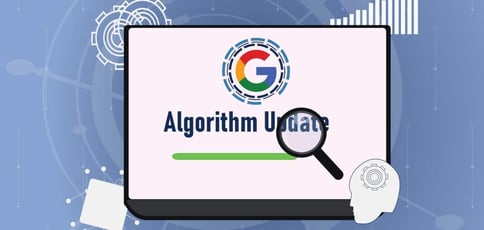
Key Takeaways
If hosts are seeing an uptick in traffic on client sites, Google may be the reason why.
It just wrapped up a 16-day June 2025 Broad Core Algorithm Update that ran from June 30 to July 17. In the process, it also resurrected thousands of sites that may have been out of the SERPs for years.
In September 2023, Google performed the Helpful Content Update, causing a traffic drop for thousands of sites. That was the one that prioritized “people-first content,” or what qualifies as valuable, helpful content. The sites that fell were likely thin or not considered valuable to readers.
But last month’s update brought somewhere between 20% and 80% of previously affected sites back up.
“Here are some more examples of HCU(X) sites surging with the June core update (starting on about 7/6). I really hope this continues for them. It’s been far too long with no movement,” wrote SEO analyst Glenn Gabe.
Here are some more examples of HCU(X) sites surging with the June core update (starting on about 7/6). I really hope this continues for them. It's been far too long with no movement. Again, stay tuned. pic.twitter.com/poy3NprVE4
— Glenn Gabe (@glenngabe) July 9, 2025
As for why, it could be because the site owners added what Google’s algorithm considers helpful content.
Google SearchLiaison put it well: “The classifier is always running. If it sees a site has reduced unhelpful content, the site might start performing better at any time.”
It could also be that those sites benefited from Multi-Vector Retrieval via Fixed Dimensional Encodings, or simply MUVERA, a new algorithm that came fresh with the update.
Here’s a small example. More context can be found here, but this is how MUVERA would find the answer to “What is the height of Mount Everest?”:
The new system lets Google retrieve content through multiple vectors versus just one, meaning it can surface the most relevant sections from a page, even if the rest of the content isn’t deemed particularly useful.
“Sites that improved had pages with super helpful content. They tended to go beyond the obvious answer. They often demonstrated first hand experience. They were well structured and easy to scan. They often included helpful visuals,” SEO expert Marie Haynes wrote on her blog.
Now, with AI summarizers and tools like ChatGPT delivering answers directly from the web, Generative Engine Optimization, or GEO, is what’s coming next.
Fueling AI Visibility
While Google hasn’t said anything specific about GEO, providers like Wix are already implementing features to help site owners track their rankings in GEO — for example, if they’re showing up in genAI searches at all.
>> Wix Debuts First GEO Tool, and Web Hosts Should Pay Attention
MUVERA’s ability to surface relevant page sections, and not just entire pages, isn’t unlike how LLMs like ChatGPT handle content today.
For those new to the concept, GEO is about making sure that web content can be cited and surfaced by AI search tools like ChatGPT. One way hosts are already helping clients get seen by crawlers is by supporting features like llm.txt, which governs how AI bots interact with a site, or whether they can access it at all.
The core update may be over, but the core of GEO success (pun intended) still comes down to the same things hosts already control: speed, uptime, structured data, and clean architecture. And right now, it has to be designed for crawlers.




